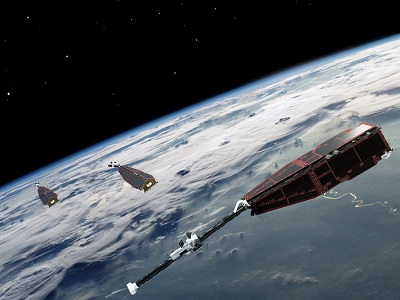- Activities
- TIRO
TIRO
Overview
LEO (Low Earth Orbit) satellites are indispensable when it comes to gaining/acquiring information on the electron content of the upper ionosphere. This region is otherwise not accessible neither on a continuous basis, nor on a global scale. Investigating electron density variations is crucial in particular because they cause ionospheric effects on radio communication and navigation signals, such as Global Navigation Satellite Systems (GNSS). Topside Ionosphere Radio Observations from multiple LEO-missions (TIRO) project will provide two measurements from onboard instruments of LEO satellite missions: TEC (Total Electron Content) derived from GNSS signals, and electron density derived from KBR (K-Band Ranging) system observations.
The main goal of TIRO is to extend the existing TEC data set of Swarm with topside TEC products derived from other LEO missions, e.g. CHAMP, GRACE, and GRACE-FO. Another goal of TIRO is to extend the existing Swarm data sets for in situ plasma density by adding similar products derived from inter-satellite K-Band radio links between the two GRACE and GRACE-FO satellites, respectively.
The benefit of combining observations from multiple satellites is to extend the spatial and local time coverage of ionospheric sounding. At the completion of TIRO, electron content and density data of the topside ionosphere will be available for nearly two solar cycles from 2000 up to present.
Documentation
Download project documents:
- Swarm TIRO product description
- Swarm TIRO processing algorithm description
- Swarm TIRO validation report
More information about TIRO project
Project duration: August 2020 – February 2022. This project is funded by ESA via the Swarm DISC, Sub-Contract No. SW-CO-DTU-GS-126.
